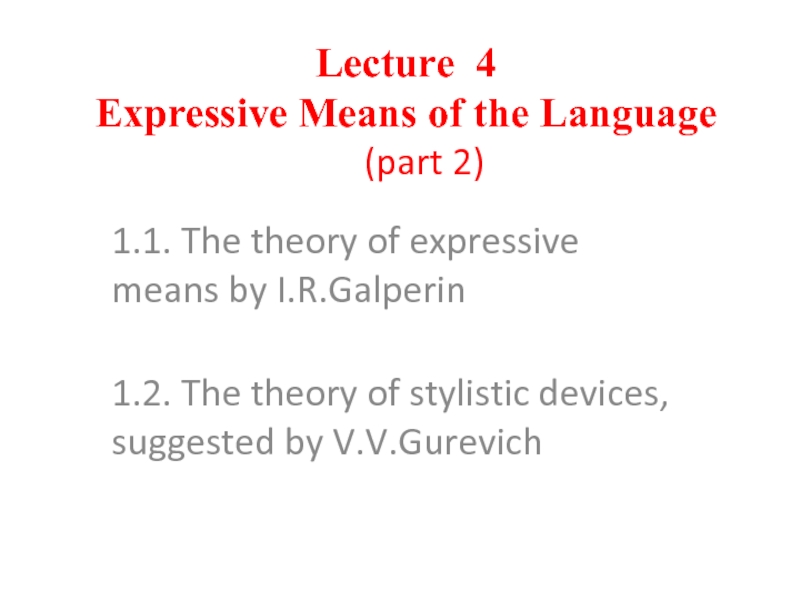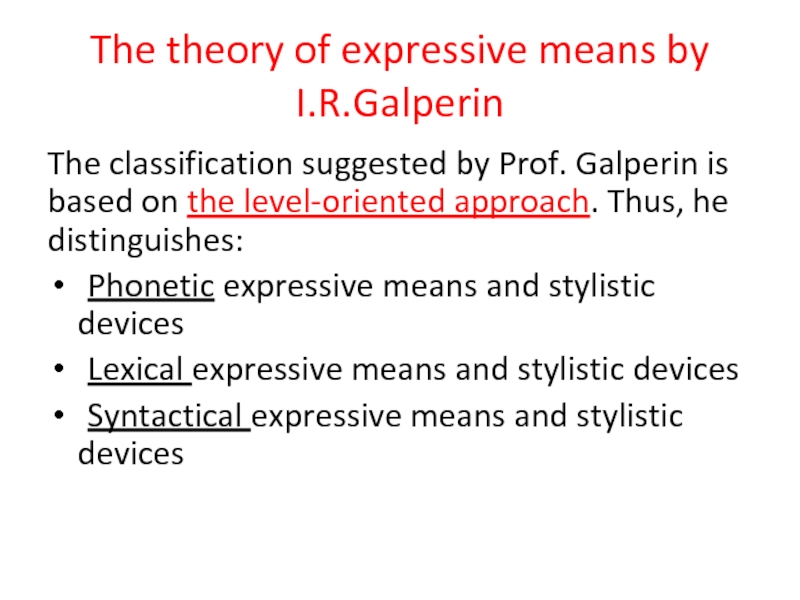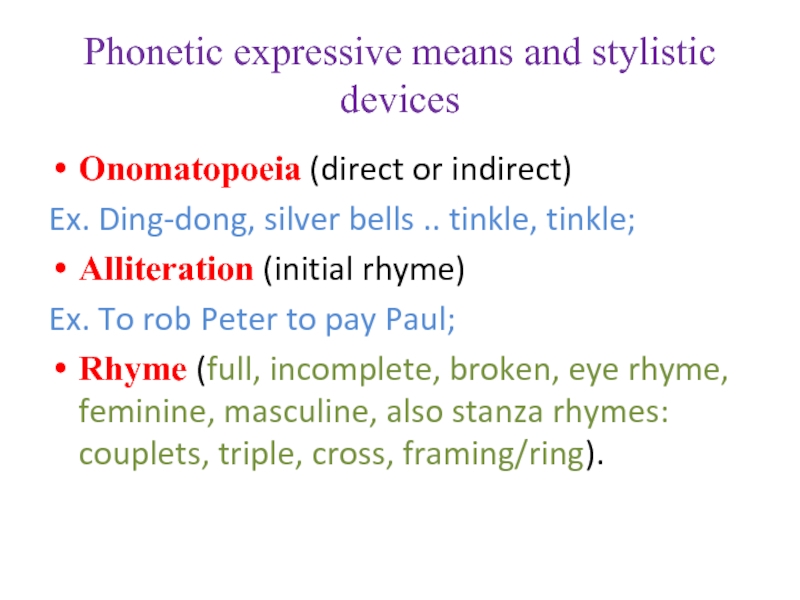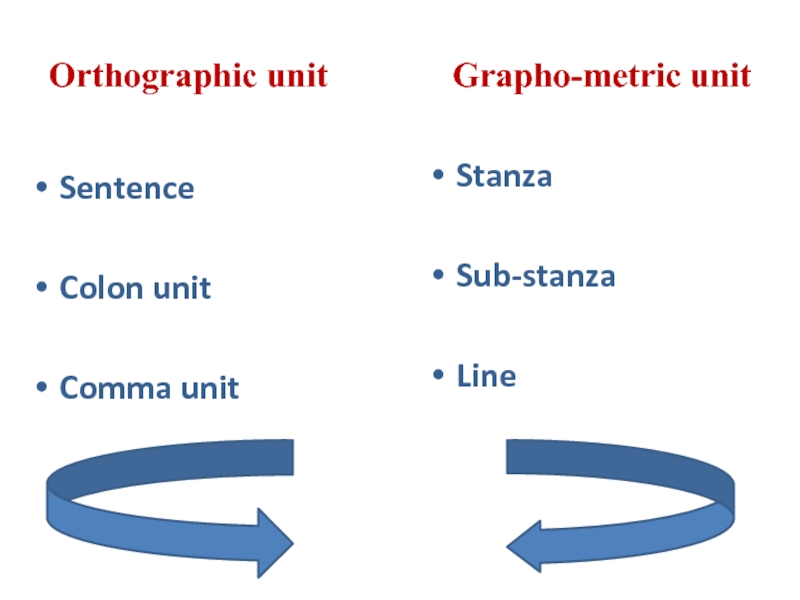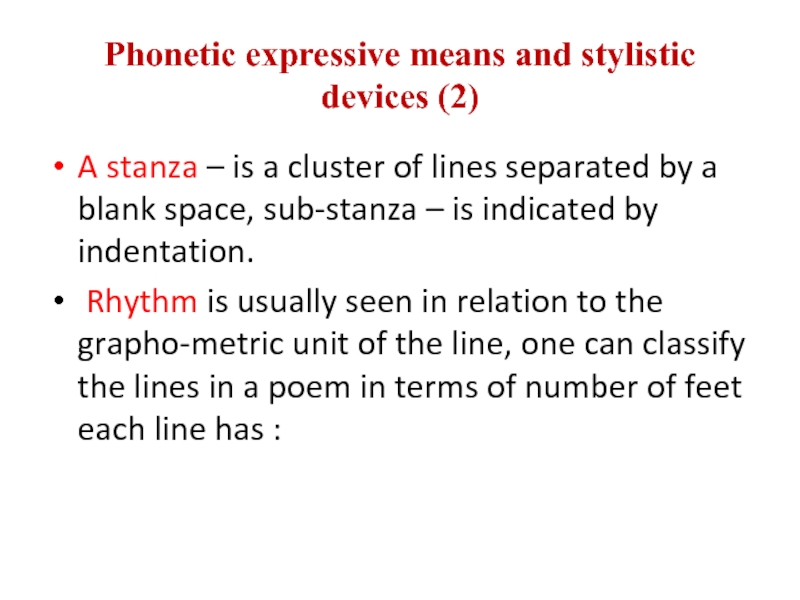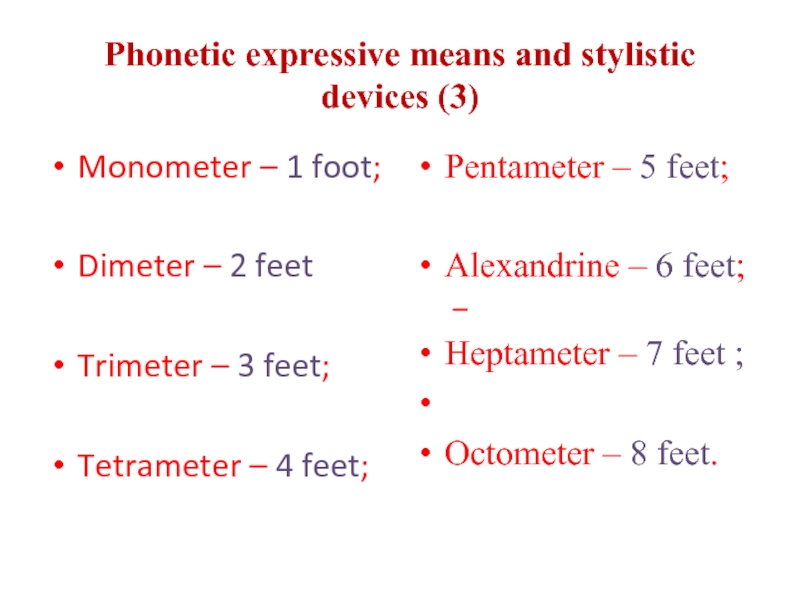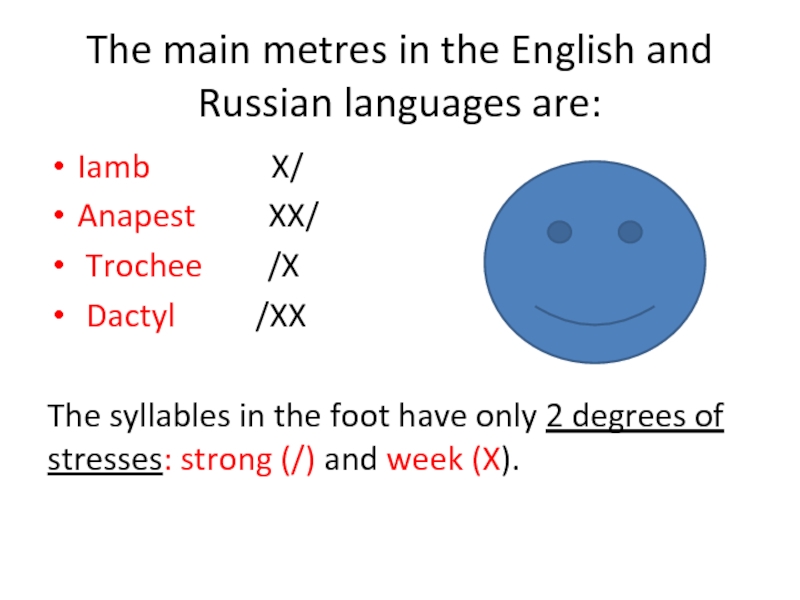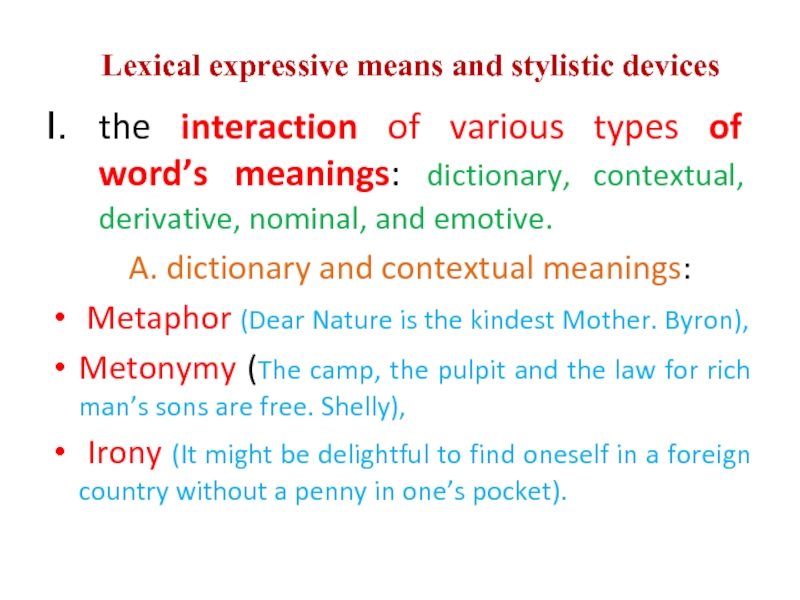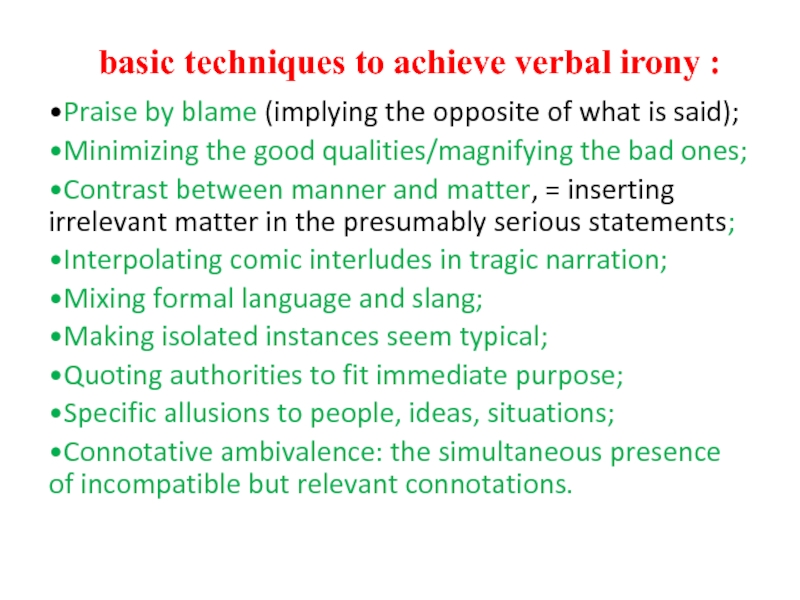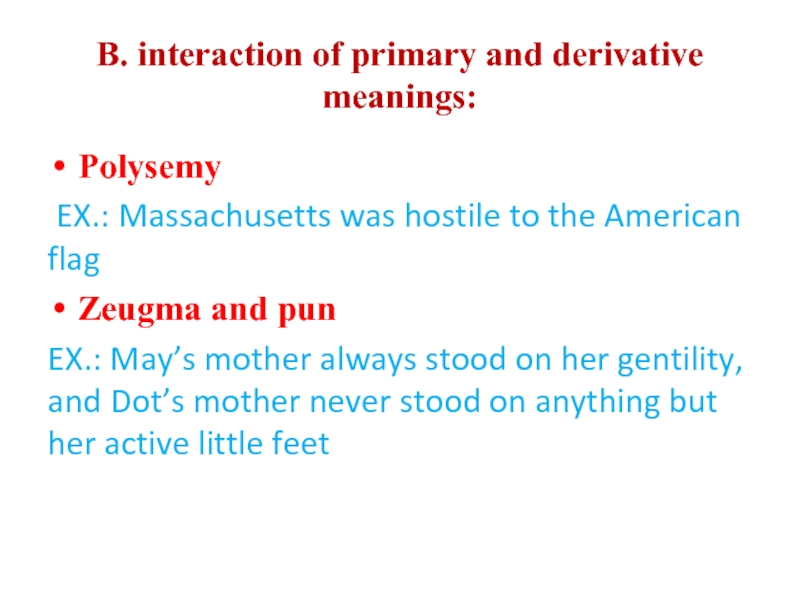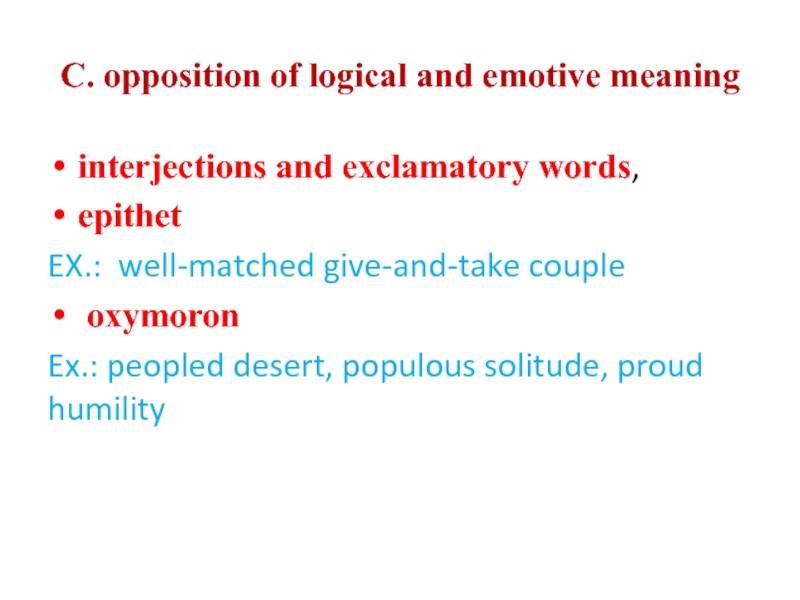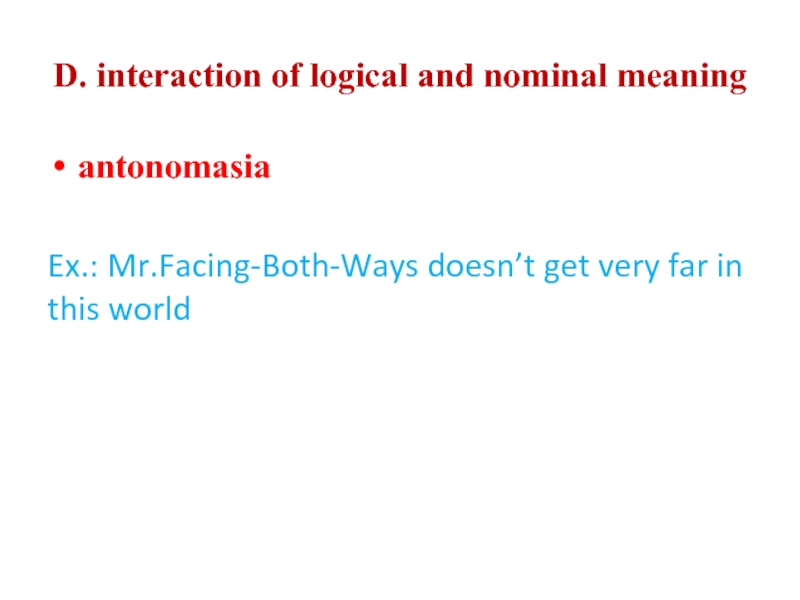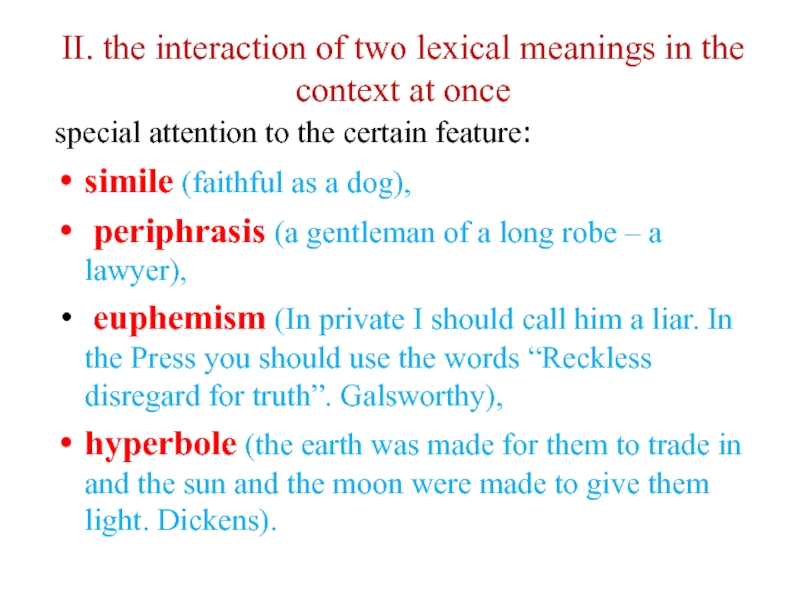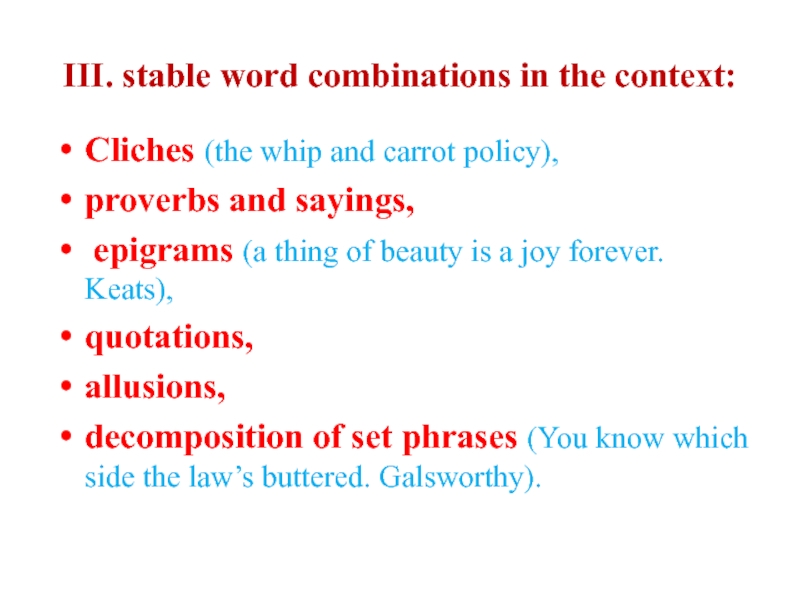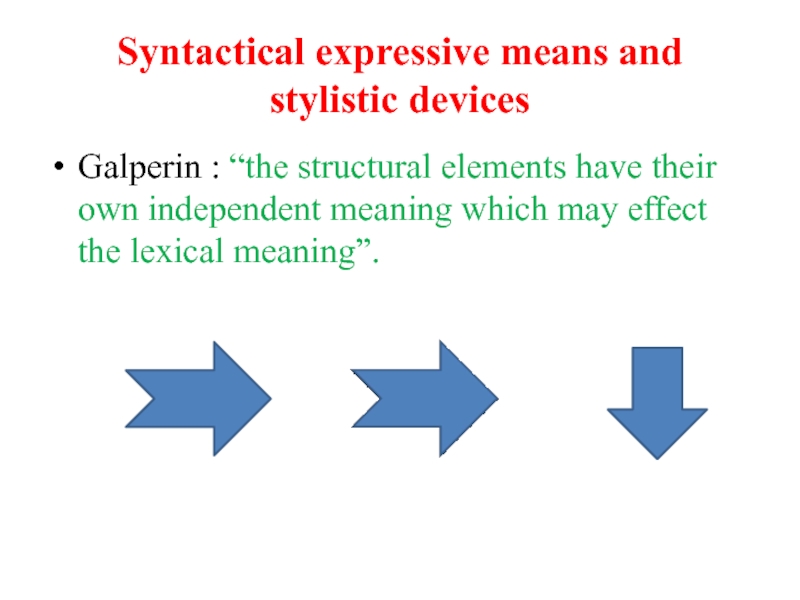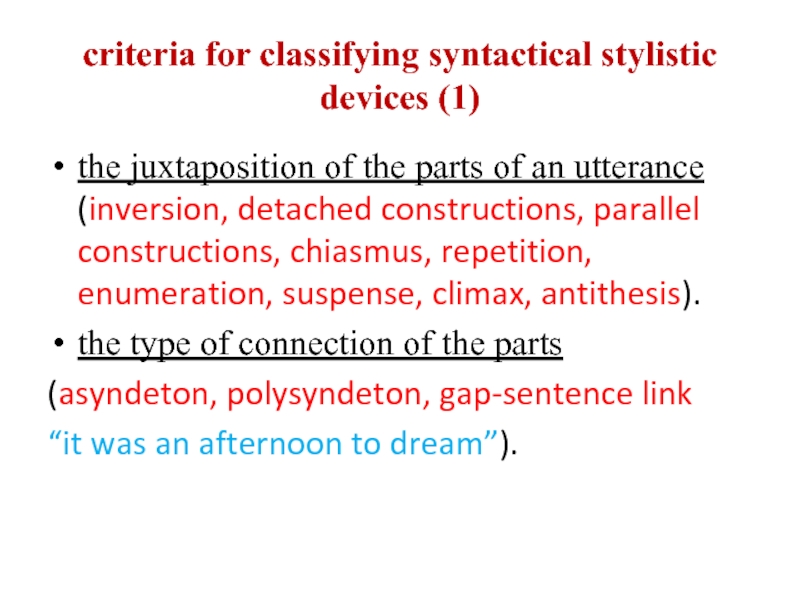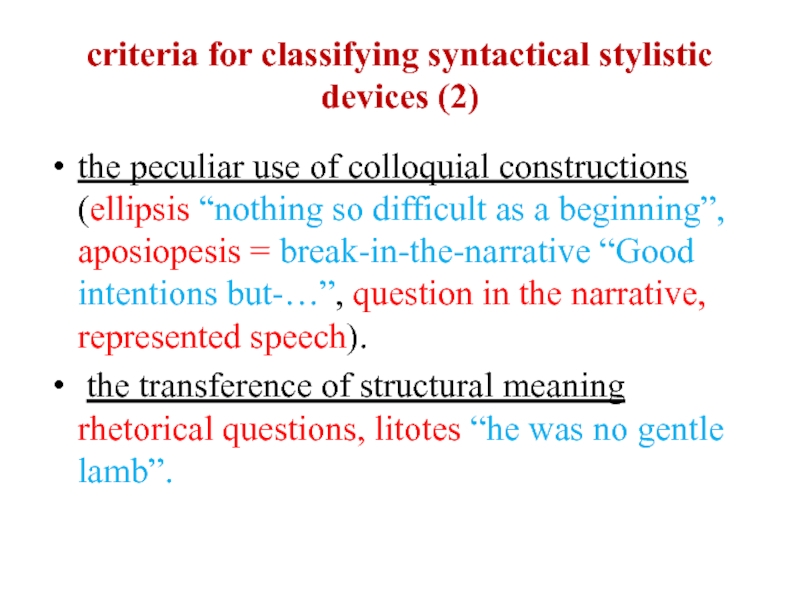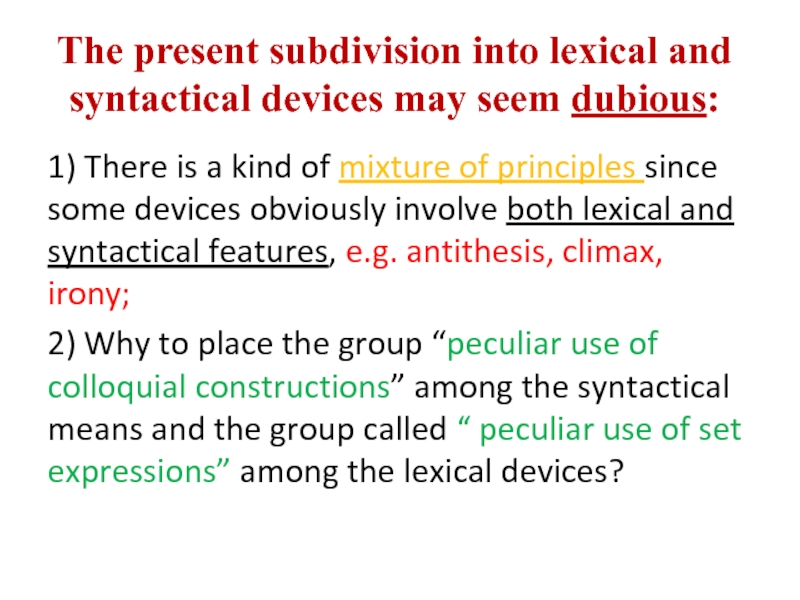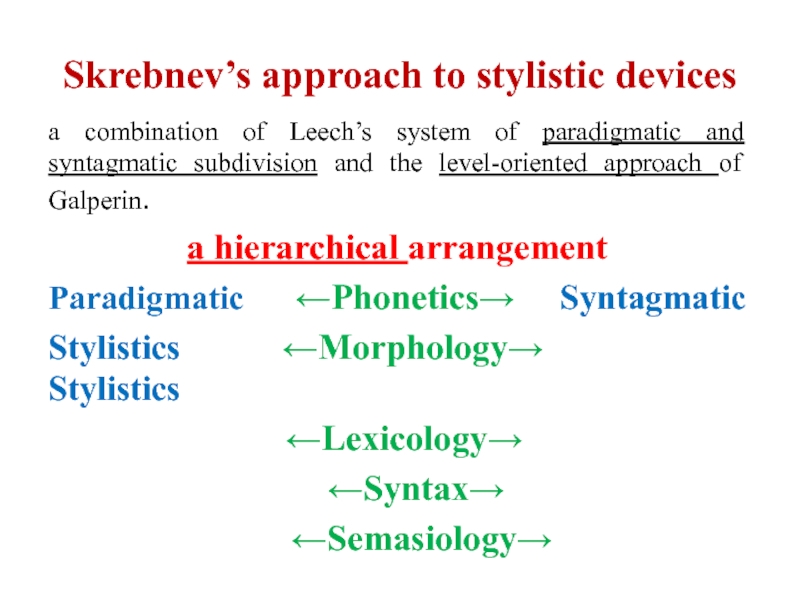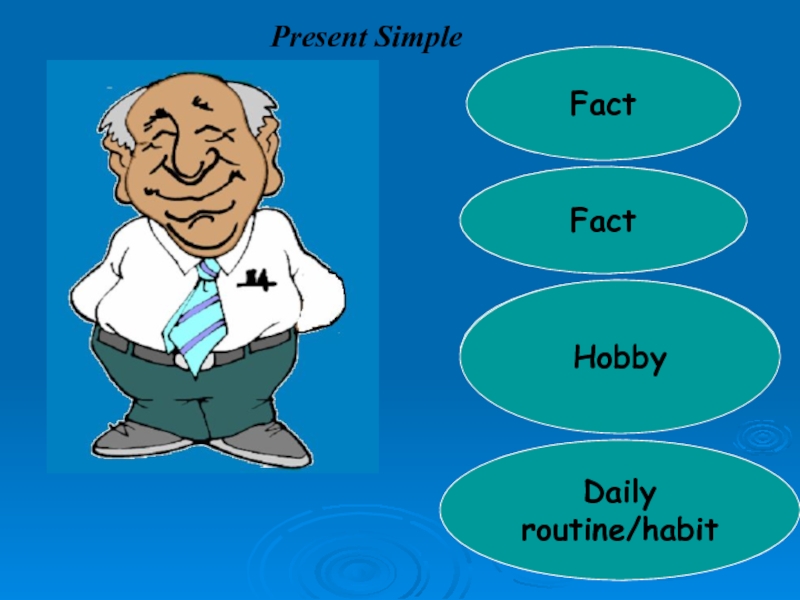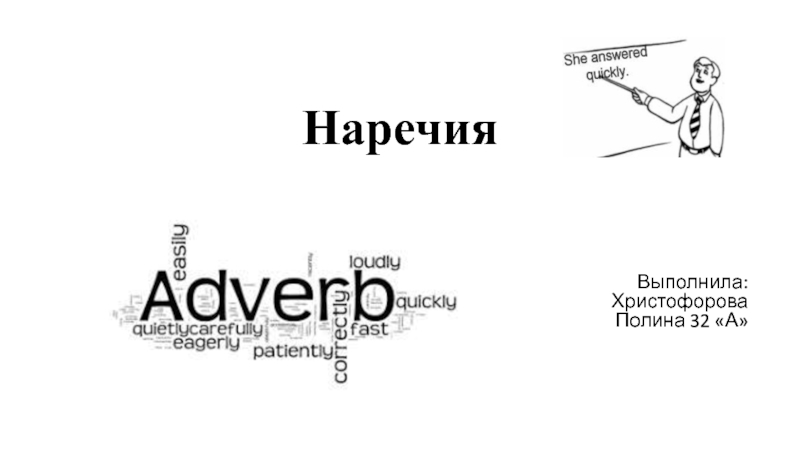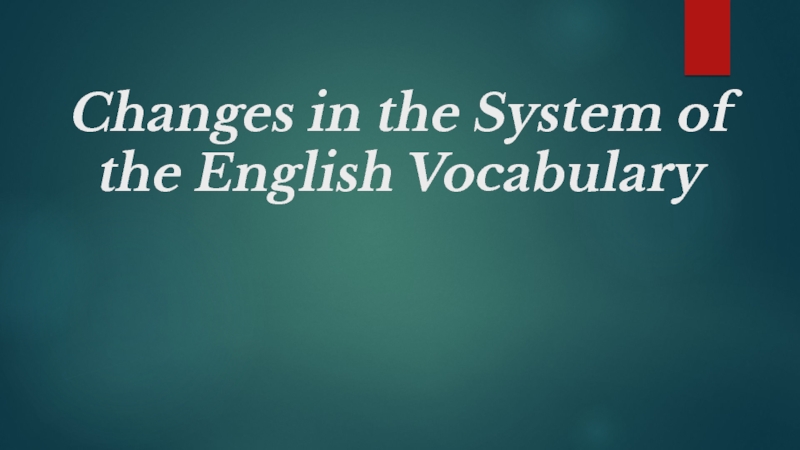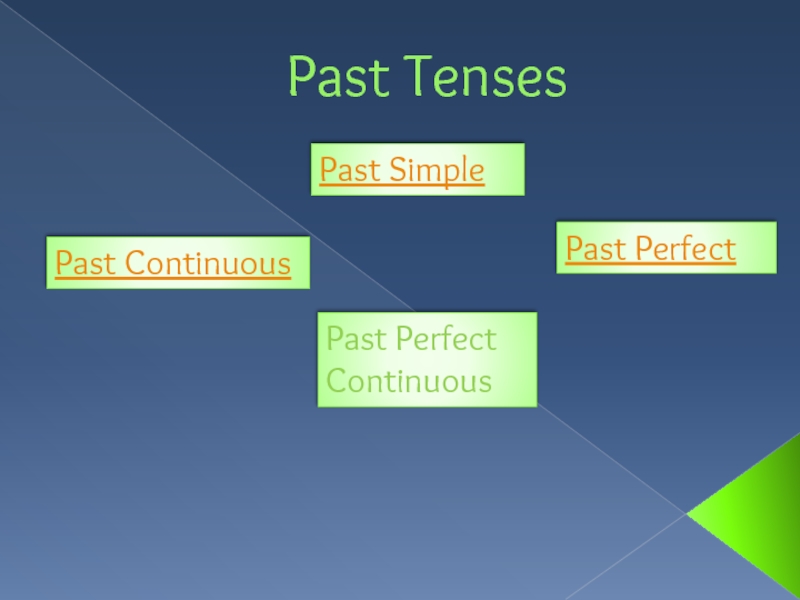- Главная
- Разное
- Дизайн
- Бизнес и предпринимательство
- Аналитика
- Образование
- Развлечения
- Красота и здоровье
- Финансы
- Государство
- Путешествия
- Спорт
- Недвижимость
- Армия
- Графика
- Культурология
- Еда и кулинария
- Лингвистика
- Английский язык
- Астрономия
- Алгебра
- Биология
- География
- Детские презентации
- Информатика
- История
- Литература
- Маркетинг
- Математика
- Медицина
- Менеджмент
- Музыка
- МХК
- Немецкий язык
- ОБЖ
- Обществознание
- Окружающий мир
- Педагогика
- Русский язык
- Технология
- Физика
- Философия
- Химия
- Шаблоны, картинки для презентаций
- Экология
- Экономика
- Юриспруденция
Lecture 4. Expressive means of the language презентация
Содержание
- 1. Lecture 4. Expressive means of the language
- 2. The theory of expressive means
- 3. Phonetic expressive means and stylistic devices Onomatopoeia
- 4. Orthographic unit
- 5. STANZA When Westwall Downess I gan to
- 6. Phonetic expressive means and stylistic devices (2)
- 7. Phonetic expressive means and stylistic devices (3)
- 8. The main metres in the English and
- 9. Lexical expressive means and stylistic devices
- 10. basic techniques to achieve verbal irony :
- 11. B. interaction of primary and derivative meanings:
- 12. C. opposition of logical and emotive meaning
- 13. D. interaction of logical and nominal meaning
- 14. II. the interaction of two lexical meanings
- 15. III. stable word combinations in the context:
- 16. Syntactical expressive means and stylistic devices Galperin
- 17. criteria for classifying syntactical stylistic devices (1)
- 18. criteria for classifying syntactical stylistic devices (2)
- 19. The present subdivision into lexical and syntactical
- 20. Skrebnev’s approach to stylistic devices a
Слайд 1
Lecture 4
Expressive Means of the Language
(part 2)
1.1. The
1.2. The theory of stylistic devices, suggested by V.V.Gurevich
Слайд 2
The theory of expressive means by I.R.Galperin
The classification suggested by
Phonetic expressive means and stylistic devices
Lexical expressive means and stylistic devices
Syntactical expressive means and stylistic devices
Слайд 3Phonetic expressive means and stylistic devices
Onomatopoeia (direct or indirect)
Ex. Ding-dong, silver
Alliteration (initial rhyme)
Ex. To rob Peter to pay Paul;
Rhyme (full, incomplete, broken, eye rhyme, feminine, masculine, also stanza rhymes: couplets, triple, cross, framing/ring).
Слайд 5STANZA
When Westwall Downess I gan to tread,
Where cleanely wynds the greene
Methought a landskipp there was spread,
Here a bush and there a sheep:
The pleated twinkles of the face
Of wave-swolne earthdid lend such grace,
As shadows in Imag’ry
Which both deceive and please the eye.
…… - sub-stanza …... – a line
Слайд 6Phonetic expressive means and stylistic devices (2)
A stanza – is a
Rhythm is usually seen in relation to the grapho-metric unit of the line, one can classify the lines in a poem in terms of number of feet each line has :
Слайд 7Phonetic expressive means and stylistic devices (3)
Monometer – 1 foot;
Dimeter
Trimeter – 3 feet;
Tetrameter – 4 feet;
Pentameter – 5 feet;
Alexandrine – 6 feet;
Heptameter – 7 feet ;
Octometer – 8 feet.
Слайд 8The main metres in the English and Russian languages are:
Iamb
Anapest XX/
Trochee /X
Dactyl /XX
The syllables in the foot have only 2 degrees of stresses: strong (/) and week (X).
Слайд 9 Lexical expressive means and stylistic devices
the interaction of various types
A. dictionary and contextual meanings:
Metaphor (Dear Nature is the kindest Mother. Byron),
Metonymy (The camp, the pulpit and the law for rich man’s sons are free. Shelly),
Irony (It might be delightful to find oneself in a foreign country without a penny in one’s pocket).
Слайд 10basic techniques to achieve verbal irony :
•Praise by blame (implying the
•Minimizing the good qualities/magnifying the bad ones;
•Contrast between manner and matter, = inserting irrelevant matter in the presumably serious statements;
•Interpolating comic interludes in tragic narration;
•Mixing formal language and slang;
•Making isolated instances seem typical;
•Quoting authorities to fit immediate purpose;
•Specific allusions to people, ideas, situations;
•Connotative ambivalence: the simultaneous presence of incompatible but relevant connotations.
Слайд 11B. interaction of primary and derivative meanings:
Polysemy
EX.: Massachusetts was hostile
Zeugma and pun
EX.: May’s mother always stood on her gentility, and Dot’s mother never stood on anything but her active little feet
Слайд 12C. opposition of logical and emotive meaning
interjections and exclamatory words,
epithet
EX.: well-matched give-and-take couple
oxymoron
Ex.: peopled desert, populous solitude, proud humility
Слайд 13D. interaction of logical and nominal meaning
antonomasia
Ex.: Mr.Facing-Both-Ways doesn’t get
Слайд 14II. the interaction of two lexical meanings in the context at
special attention to the certain feature:
simile (faithful as a dog),
periphrasis (a gentleman of a long robe – a lawyer),
euphemism (In private I should call him a liar. In the Press you should use the words “Reckless disregard for truth”. Galsworthy),
hyperbole (the earth was made for them to trade in and the sun and the moon were made to give them light. Dickens).
Слайд 15III. stable word combinations in the context:
Cliches (the whip and
proverbs and sayings,
epigrams (a thing of beauty is a joy forever. Keats),
quotations,
allusions,
decomposition of set phrases (You know which side the law’s buttered. Galsworthy).
Слайд 16Syntactical expressive means and stylistic devices
Galperin : “the structural elements have
Слайд 17criteria for classifying syntactical stylistic devices (1)
the juxtaposition of the parts
the type of connection of the parts
(asyndeton, polysyndeton, gap-sentence link
“it was an afternoon to dream”).
Слайд 18criteria for classifying syntactical stylistic devices (2)
the peculiar use of colloquial
the transference of structural meaning rhetorical questions, litotes “he was no gentle lamb”.
Слайд 19The present subdivision into lexical and syntactical devices may seem dubious:
1) There is a kind of mixture of principles since some devices obviously involve both lexical and syntactical features, e.g. antithesis, climax, irony;
2) Why to place the group “peculiar use of colloquial constructions” among the syntactical means and the group called “ peculiar use of set expressions” among the lexical devices?
Слайд 20Skrebnev’s approach to stylistic devices
a combination of Leech’s system of
a hierarchical arrangement
Paradigmatic ←Phonetics→ Syntagmatic
Stylistics ←Morphology→ Stylistics
←Lexicology→
←Syntax→
←Semasiology→
